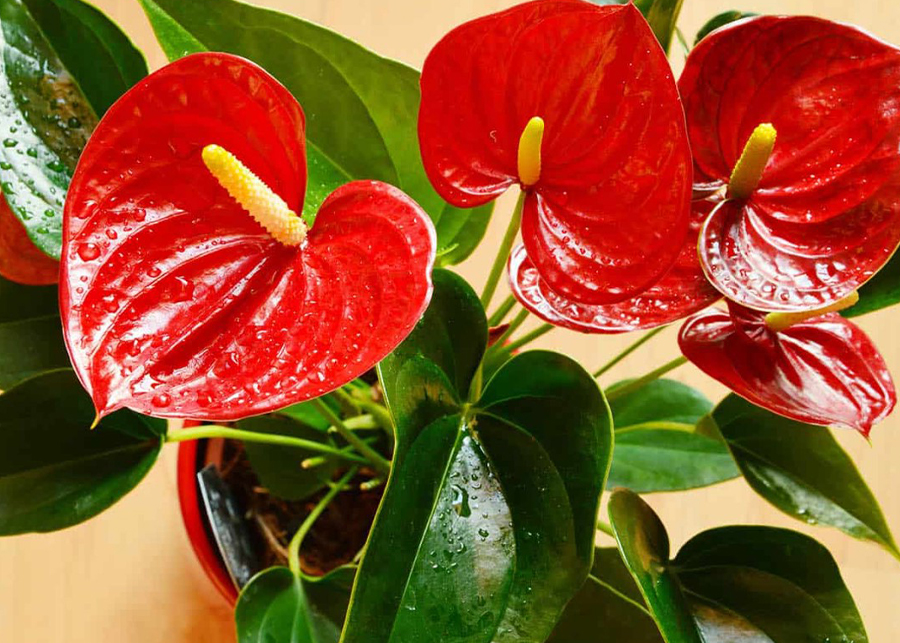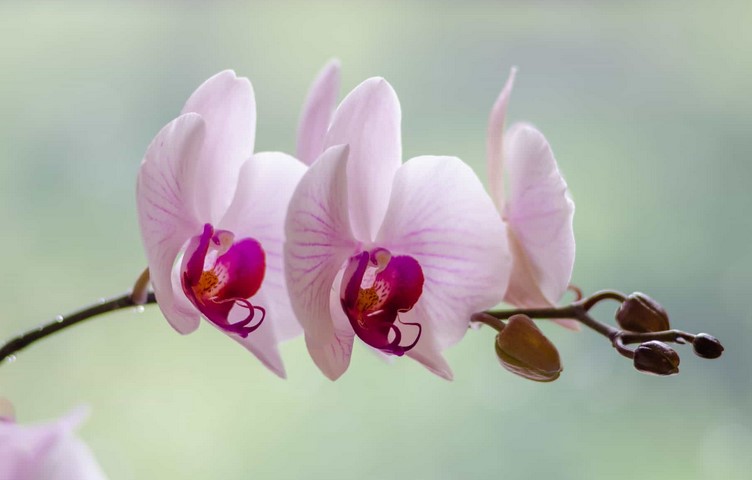Why take the time to care for an anthurium plant? What’s so special about this tropical flower? Anthurium is native to the humid rainforests of South America. The anthurium plant family, Araceae, is a large group of plants that includes more than 20,000 species. Anthuriums are not only gorgeous, but they’re also extremely resilient and grow well in warm, humid environments indoors. They’re also easy to care for if you can provide consistent moisture levels.
Anthurium plants are native to the rainforests of South America and the Caribbean. They live as epiphytes in crevices and need a warm environment with bright, filtered light and plenty of humidity to thrive. Care for anthuriums is simple, but you must follow certain guidelines to provide the best growing conditions.

If you find that your Anthurium plant is suffering from too much or too little light, you need to move it to a window with less light. If you notice that the leaves of your plant are brown, they need water. You can easily correct this problem by pruning them or by moving them to another window that receives indirect sunlight. Make sure you protect them from direct sunlight by enclosing them in a sheer curtain or fabric shade. You can also check them for excessive yellowing and prune them if necessary.
To propagate your anthurium, divide its crown root system into two sections. Each section should have at least one leaf and healthy, firm roots. Use clean pruning shears to cut off any extended roots. Once you have removed the old soil, examine the roots to make sure they are firm and healthy. If you find damaged roots, remove them with a sterile knife. Place the newly separated crown into a pot that has a depth of two or three inches.
When watering your anthurium plant, remember to avoid over-watering. They are best when watered just enough to prevent the soil from becoming too wet. Ensure that the soil is evenly moist but not soggy, as this will cause the roots to rot. The watering schedule will depend on the season. During the summer, you can water your plant twice a week, while during the winter, you can water it once every other week.
The best soil for anthuriums is rich in peat moss. It helps retain moisture and helps Anthuriums grow well in dry climates. If you don’t have peat moss around, you can mix in a coarser mix. Commercial potting soil usually has some fertilizer in it.
Regardless of the type of potting soil, you must choose a container with a drainage hole at the base.

One of the most popular types of anthuriums is called Anthurium andraeanum. It is widely grown and often is mixed with other subspecies. Anthurium andraeanum is easy to grow in an indoor container. Some subspecies bloom all season, while others bloom only occasionally.
Fertilize your anthurium every few months. It should be fed with a phosphorus-rich liquid fertilizer every two to three months. This fertilizer should be applied at a quarter strength and will encourage flowering. Generally, anthuriums need repotting every two to three years. Changing pots can cause roots to crowd and become rootbound. The new pot should be at least two inches bigger than its old pot. The new pot should be about 1/3 full of ideal soil medium.
Anthuriums need a warm, humid climate. They prefer temperatures between 65 degrees Fahrenheit and 85 degrees Fahrenheit. Outdoors, they can be grown in zones 11 and 12. They must be misted daily and may need a constant humidifier.
Anthurium Care – How to Care For Different Types of Anthuriums Result
Some of the most common types of anthuriums include Flamingo, Puckered, Narrow Leaf, Washingtonianum, Red Hot and Marbled. Some of them grow to great heights, depending on the growing conditions you give them. Anthuriums can be given as gifts to loved ones and your friends, especially if you know their favorite colors or their birth month flower.









